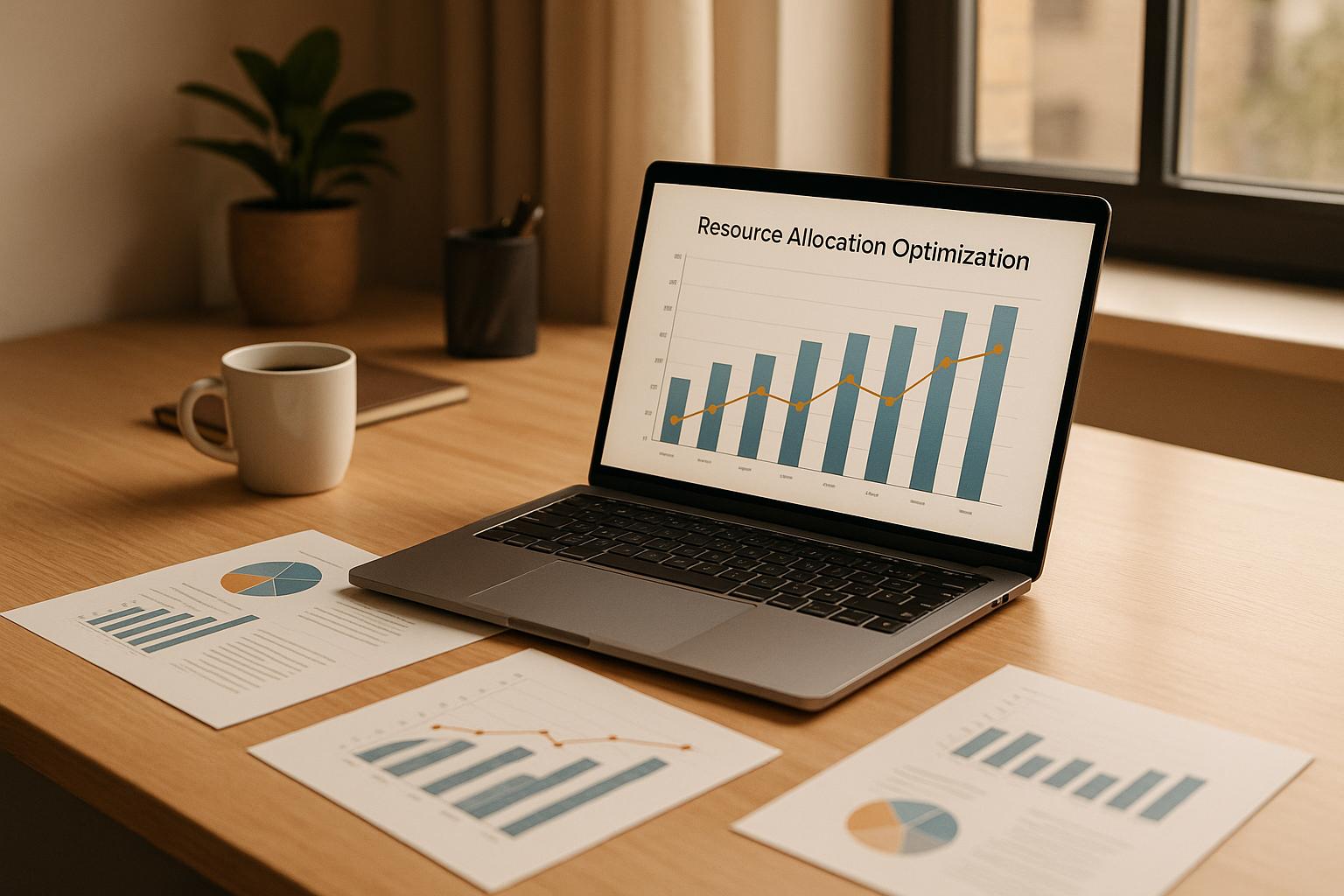Remote work is here to stay, but it comes with risks. Companies face challenges like data breaches, phishing attacks, and weak access controls. Here's how one organization secured its global remote workforce:
- Key Risks Identified: Unsecured networks, outdated security protocols, and lack of multi-factor authentication.
- Solutions Implemented:
- Advanced VPNs for secure connections.
- Multi-factor authentication to prevent unauthorized access.
- End-to-end encryption for data protection.
- Regular employee security training and phishing simulations.
- Results: A 78% drop in phishing attempts and 92% improvement in data handling.
Remote security requires a mix of strong tools, employee training, and frequent updates. The full article explores how to build a secure system that protects sensitive information while keeping teams productive.
Securing Remote Workforces Key Strategies for Business ...
Security Assessment Process
After identifying key security risks, the team conducted an internal evaluation to pinpoint vulnerabilities in remote work setups. The focus areas included network access, device management, authentication methods, and data transfer processes. This helped establish clear security goals.
Identifying Weak Points
The assessment uncovered several critical issues:
- Many remote employees relied on unsecured home networks.
- Company devices were running outdated security protocols.
- Authentication systems lacked multi-factor verification.
- Employees were using unauthorized file-sharing tools.
These findings highlighted that the existing security measures were inadequate for managing the challenges of a global remote workforce.
Security Goals and Priorities
To address these vulnerabilities, the organization outlined specific goals to improve remote work security:
- Secure all remote connections using tools like advanced VPNs.
- Update management protocols for both company-owned and personal devices.
- Roll out multi-factor authentication for critical systems.
- Encrypt all data transfers to protect sensitive information.
- Increase the frequency of security training from once a year to quarterly sessions.
These goals were categorized into three main areas:
- Infrastructure Protection: Introducing enterprise-level security solutions and implementing stricter access controls.
- Device Security: Setting up remote monitoring, automated updates, and improved device management systems.
- Employee Security Practices: Providing updated training programs and conducting regular compliance checks.
To ensure effective implementation, the organization collaborated with cybersecurity experts to develop a detailed roadmap. These defined goals served as a foundation for rolling out targeted security measures.
Security Measures and Tools
After completing its security assessment, the organization introduced a range of measures to safeguard its remote operations. Here's how various technical solutions were applied to protect the globally distributed workforce.
Two-Factor Authentication Systems
The organization rolled out two-factor authentication across critical platforms. This included methods like push notifications, biometric verification, and hardware tokens to detect and block suspicious activity. These steps ensured that only authorized users could access sensitive systems.
Data Protection Methods
To protect data both in transit and at rest, the organization implemented multiple layers of security. Secure virtual private networks (VPNs) created encrypted channels for communication, while end-to-end encryption safeguarded critical cloud storage. Additional measures like geo-fencing and role-based access controls limited access to sensitive information. Automated data classification tools also helped in identifying and responding to threats quickly.
Device Protection Systems
A comprehensive device protection strategy was put in place, featuring continuous monitoring, rapid deployment of security patches, and application-level controls. For employees using personal devices for work, containerization was introduced to separate corporate data from personal information, maintaining privacy. These systems created a strong foundation for effective employee security training.
sbb-itb-97f6a47
Employee Security Training
The organization introduced a structured security training program to help remote employees use device protections effectively.
Security Training Content
This multi-level training program for remote workers focused on key areas like password management, data handling, and identifying potential threats. Delivered via an interactive platform, the program tracked both progress and understanding.
Key elements included:
- Phishing simulation exercises: Employees were tested with mock phishing emails to spot vulnerabilities.
- Access management guidelines: Clear instructions on managing credentials and authentication.
- Data classification training: Steps for categorizing and handling sensitive information securely.
- Incident response protocols: Defined actions to take when identifying potential security breaches.
Security Practice Exercises
To reinforce learning, employees participated in practical exercises designed to build real-world security skills. These scenarios helped them respond effectively to potential threats.
Examples of these exercises included:
- Simulated phishing campaigns: Employees received fake phishing emails to evaluate their ability to detect scams.
- Security incident drills: Teams practiced managing simulated breaches.
- Access control tests: Random checks ensured proper adherence to authentication procedures.
These exercises worked alongside existing technical safeguards, creating a comprehensive approach to remote security.
Regular Security Updates
A consistent schedule of security updates kept employees informed and prepared:
| Update Type | Frequency | Focus Area |
|---|---|---|
| Security Bulletins | Weekly | Emerging threats and vulnerabilities |
| Training Refreshers | Monthly | Reviews of specific protocols |
| Policy Updates | Quarterly | Changes to security procedures |
| Compliance Reviews | Bi-annual | Updates on regulatory requirements |
Each update included practical examples and clear action steps. A dedicated communication channel ensured employees received immediate alerts for urgent threats or updates.
The program's success was measured through regular assessments and feedback. Within the first six months, the organization reported a 78% drop in successful phishing attempts and a 92% improvement in proper data handling practices.
Security Program Results
After implementing updated security measures and providing enhanced employee training, the organization saw noticeable improvements:
Security Incident Data
The program led to a clear drop in unauthorized access attempts and malware infections, which previous metrics had not fully captured. Fewer successful phishing attacks and a decline in unauthorized access attempts highlighted the program's impact across the organization's systems.
Cost Prevention Analysis
The proactive approach didn’t just improve security - it also delivered financial gains. Preventing breaches, minimizing downtime, and cutting recovery costs resulted in annual savings that far outweighed the initial security investment. This demonstrates the financial advantage of staying ahead of potential threats.
Key Findings and Advice
The program's results helped shape updated security guidelines and future plans.
Remote Security Guidelines
Here are the main takeaways from the security program:
-
Layered Authentication
Strengthen authentication by enforcing strict password rules and adding two-factor authentication to reduce the risk of unauthorized access. -
Device Management
Ensure device security through:- Regular scans for vulnerabilities
- Automated updates to patch security gaps
- Remote wiping capabilities for lost or compromised devices
- Encrypted storage to protect sensitive information
-
Data Security Measures
Use VPNs, end-to-end encryption, and role-based access controls to safeguard data and prevent breaches.
Next Steps in Security
Update Security Training
Regularly refresh training programs to address emerging threats. Focused sessions can help remote employees stay informed about the latest security protocols.
These insights will shape the next phase of improving remote work security.
Conclusion: Securing Remote Work
Protecting remote operations requires a combination of security strategies to ensure both safety and efficiency. This involves regularly updating security frameworks with tools like strong encryption, endpoint detection and response (EDR) solutions, and strict access controls to address new and evolving threats.
For businesses looking to bolster their remote security, partnering with IT consulting firms can be a smart move. These firms can assist with:
- Security evaluations and implementation
- Cloud-based security solutions
- Risk management strategies
- Advanced threat detection analytics
- Employee training programs
By working with cybersecurity professionals, organizations can create and maintain secure remote environments that safeguard sensitive information and adapt to technological changes, all while keeping productivity on track.
Top Consulting Firms Directory



